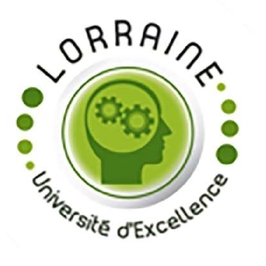Integrative and Conjugative Elements in Streptococci (ICE-Tea)
Bacterial genomes adapt to environmental changes through rapid evolutionary mechanisms, i.e. acquisition of genes and functions through horizontal gene transfer (HGT). Among the 3 mostly characterized mechanisms, i.e. transduction, transformation, conjugation, the latter is assumed to be the most widespread one and effective to disseminate genetic information at a broad spectrum. Conjugative genetic systems are indeed the major actors in spreading selected traits such as antibiotic resistance, symbiotic or metabolic traits. Conjugation requires cell-to-cell contact and is able to deliver to the host large portion of the donor genome.
Mobile genetic elements play a key role in HGT in bacteria (Frost et al. 2005). Multiplication of bacterial genome sequencing projects in the last few years provides a remarkable opportunity to explore the pool of bacterial mobile genetic elements (« mobilome »). This shed the light on elements integrated in the chromosome called Integrative and Conjugative Elements (ICEs) which are still poorly known despite their high prevalence in bacteria (Bellanger et al., 2014). ICEs encode their own excision, transfer by conjugation and integration. In addition to the genes involved or controlling their mobility, all ICEs carry cargo genes which can provide properties (adaptation, virulence, antibiotic resistance) advantageous for bacterial host (Roberts 2013). Furthermore, in streptococci, they can also promote the transfer of large fragments of the bacterial chromosome (Hfr-like mechanism) and can mobilize a very large array of non-autonomous transferable elements including CIs-Mobilizable Elements (CIMEs) which are genetic elements with functional recombination sites but devoid of recombination and conjugation genes (Pavlovic et al, 2004; Bellanger et al, 2011; Puymège et al, 2013) and also possible integrative mobilizable elements (IMEs) which are poorly known despite their very high prevalence.
Our work focuses on ICEs of the ICESt3 family, first described in Streptococcus thermophilus (Burrus et al, 2002 a and b; Bellanger et al, 2007, 2009 and 2011; Carraro et al, 2011 and 2016), a bacterium used in dairy industry and then detected in many other streptococci that are natural inhabitants or transit in the human gastrointestinal tract (Puymege et al, 2013; 2015; Chaffanel et al, 2015; Ambroset et al 2016). ICEs of this family appear as nice models since: (i) they are widespread in streptococci in particular in species which are easy to modify genetically (natural competence of S. thermophilus and Streptococcus salivarius), (ii) we demonstrated an effective intra and interspecies conjugative transfer for several of them (Bellanger et al, 2009; Puymège et al, 2013), and (iii) they can be found in accretion or host IMEs thus offering the opportunity to study the interplay between ICEs and IMEs. Beside the characterization of the molecular mechanisms of their transfer (protein machinery and structure, regulation, mobilization), their ecological impact is a main question, especially in the context of the antibiotic pressure in the digestive microbiote (animal, human).
The major ecological niche of streptococci is the digestive tract which hosts a complex bacterial community (Dewhirst et al., 2010; Hao et al. 2004). The oral cavity can constitute a gate for bacteria to enter into the human body for example during buccal infections leading in some cases to systemic diseases (Seymour et al., 2007). The role of gut microbiota in human health and disease is now well documented (Sommer and Backhed 2013). Gut microbiota forms an open microbial ecosystem composed of resident symbiotic bacteria, commensals and opportunistic pathogens that are exposed to transient microorganisms originating from the diet. During their transit in the gastrointestinal tract, bacteria conveyed by food can exchange genes with resident bacteria. Acquired new traits may include defense tools against stresses, new catabolic properties (catabolism of sugars or other nutriments found in the ecosystem), competitive weapons such as bacteriocins, adhesion and virulence properties and antibiotic resistance. HGT can thus (i) modify the equilibrium of the intestinal microbiota by giving new competitive advantages to some strains or (ii) lead to the emergence of new pathogens or increase the virulence of existing ones. The high bacterial population in the colon, reaching up to 1013 bacteria, and the exposure of bacteria to stresses and antibiotic treatments are propitious to HGT in this complex ecosystem (Beaber et al. 2004, Foster 2007). Numerous HGT events occurring in the food chain, in particular of antibiotic resistance genes were described (Kelly et al. 2009, Aarts and Margolles 2015). A prerequisite to the control of these HGT events is to reproduce them in vivo and to characterize the environmental and physiological factors that can increase their occurrence. As the role of conjugative elements in gene fluxes has been recognized, understanding the molecular mechanisms of transfer may open new routes to impair drug resistance genes dissemination.
FEDER SIMUL
Simulation Numérique, Bioinformatique Structurale et Microbiologie Moléculaire en Synergie pour la Lutte contre la Dissémination des Résistances aux Antibiotiques
Description
L’objectif ambitieux de ce projet consistera à utiliser des approches combinées de bio-ingénierie moléculaire, de biochimie, de bio-informatique structurale, et de simulation moléculaire pour caractériser le mécanisme d’initiation du transfert conjugatif et de développer des inhibiteurs de conjugaison.
Ce projet s’intéresse à une protéine indispensable à l’initiation de la conjugaison, appelée relaxase.
Financement
Commission européenne – Grant agreement ID 821265

Durée:
De 2018 à 2023
Montant:
388 712,20 € dont FEDER 233 227,32 €
Contact : Pr Nathalie Leblond-Bourget
Le projet « Simulation numérique, bioinformatique structurale et microbiologie moléculaire en synergie pour la lutte contre la dissémination des résistances aux antibiotiques » est cofinancé par l’Union européenne dans le cadre du Programme opérationnel FEDER-FSE Lorraine et Massif des Vosges 2014-2020 et s’accompagne de l’emblème de l’Union européenne.
Son objectif est de réduire la dissémination des gènes de résistance aux antibiotiques entre bactéries du phylum des Firmicutes.
Coût total prévisionnel de l’opération : 236 947 €
Financeurs : Union européenne avec les fonds FEDER 142 150 € – Région Grand Est : 47 398,50 € – Autofinancement INRAE : 41 398,50 €
![]()

